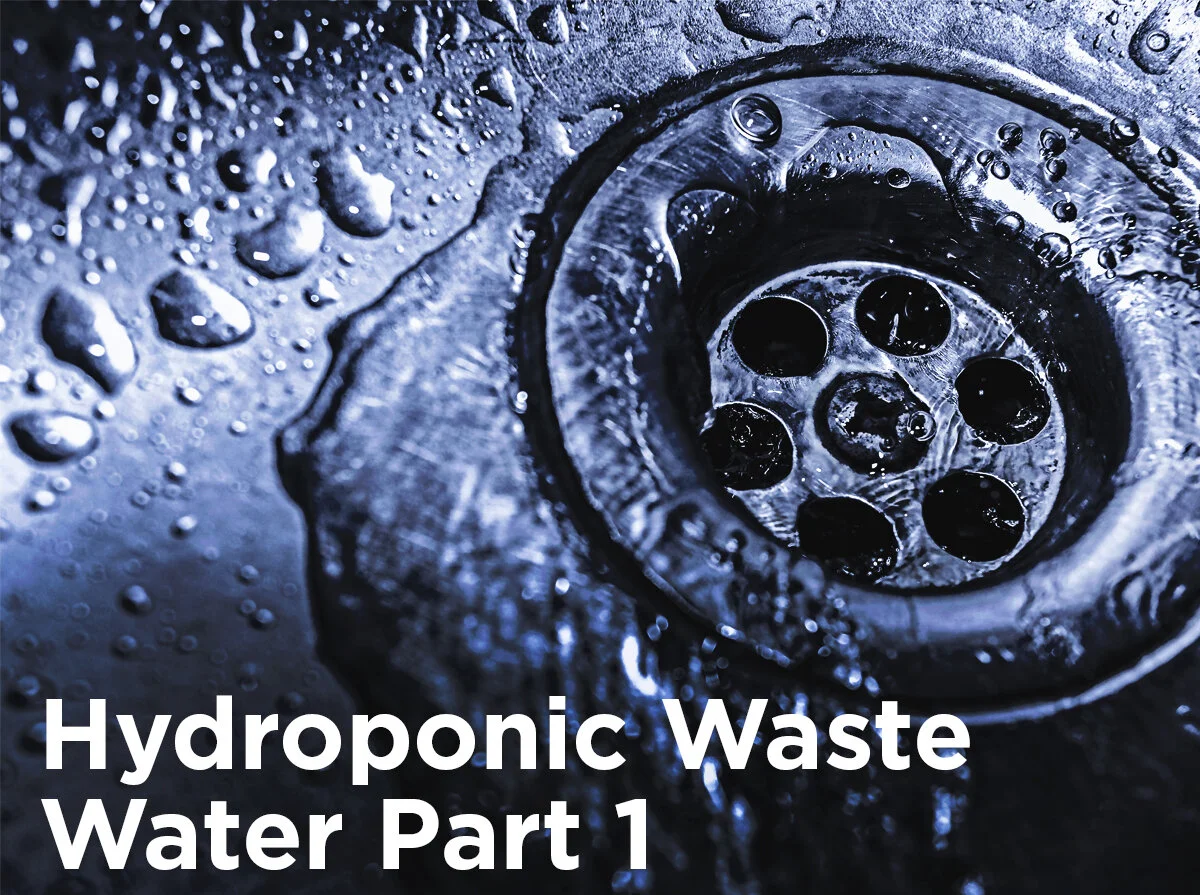Hydroponic Waste Water, Part 2
For those of you just joining us, this is the exciting second installment of best practices for dealing with the water within your hydroponic system. While we adore the sno-cones and evening fireflies, people and plants alike could all do for a little less water stress. So we’ve put together a couple more ways of reducing not just our water bill, but also our environmental impact. These approaches to better water management can be used year round, but make a special impact in the summertime, when water is most needed. Try them out and watch your summertime blues melt like ice cream in August, or read the first installment on hydroponic waste water disposal.
Resolving the Reservoir
The word hydroponics comes from the Greek words “hudor” (water) and “ponos” (work). It literally means “water-working,” i. e. proper water management and that starts with knowing when to clean out your reservoir. Changing out the reservoir solution every so often is necessary to reduce the risk of water-borne diseases, nutrient stress, and mineral build up the pumps and tubing. But most effective way of dealing with waste water is to reduce it.
Plants take up water and nutrients from the reservoir as they grow. However, they absorb far more water than nutrients, causing the concentration of the solution to increase and the pH to shift. Rather than just dumping it and starting fresh every couple of days, you can add pure water to your reservoir to dilute the electrical conductivity (EC) back down to its desired range, adjusting the pH as necessary. Use clean, pure water from an RO system for best results. After several dilutions, if the EC has dropped too low, you can add more nutrients based on the amount of water being added (rather than the full volume of the reservoir). It is important to measure and track each addition of water. Once you have added a full-reservoir’s worth of “top-up water,” it is time to change out the solution.
For example, you have a 50-gallon reservoir and you’ve added 5 gallons of water every other day. You’d need to swap out your reservoir after 20 days.
5 gallons ÷ 2 days = 2.5 gallons/day → 50 gallons ÷ 2.5 gallons/day = 20 days
Pro tip: Invest in good pH and EC meters. These are necessary tools for monitoring your nutrient solution and will help you control your system efficiently. For even more detail, take a sample of your water to your local pet shop that carries aquarium equipment. They will often test your sample for free.
Easy and Clean
Anyone can make their hydroponic system a lean, mean, and green (pun intended) growing machine. And if you need help choosing hydroponics parts or accessories for your system that will help it run smoothly, our sunny-dispositioned staff is available to help. Be sure to look for Part 3 on how else you can save water safely and effectively. Happy summer vacation! What do you love about summer? Leave a comment below or give us a shout out on Facebook, Twitter, LinkedIn, or Pinterest!
Sources:
http://atlasbutler.com/heating-and-cooling-repair/4-ways-reuse-dehumidifier-water/
http://garden.org/nga/searchqa/answer/16716/
http://news.stanford.edu/news/2005/march16/gulf-030905.html
http://www.scientificamerican.com/article/fertilizer-runoff-overwhelms-streams/







